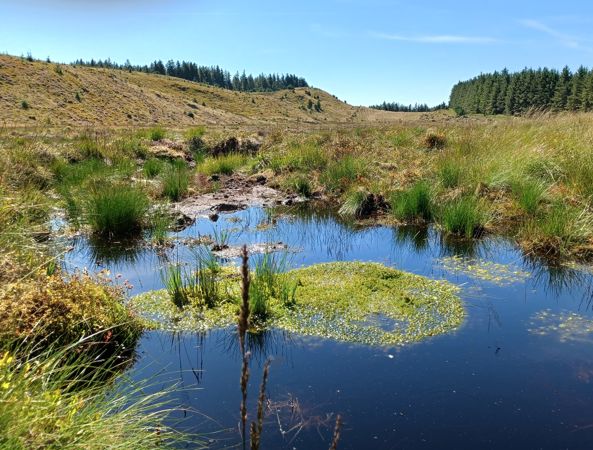Public see Wales’ peatland restoration in action

To celebrate World Peatland Day on the 2nd of June, people will now be able to search where peatland is being restored and by whom with a newly launched data layer on the Welsh Peatland Data Map.
While these crucial habitats might only cover 4% of the Welsh landscape, peatland still packs a mighty punch in tackling the nature and climate emergencies, holding 30% of the land-carbon. Yet 90% of this peatland is damaged and is releasing greenhouse gases into the atmosphere.
A restored peatland can reduce the amount of greenhouse gases emitted, slow down water flow, capture carbon, and improve biodiversity by providing unique habitats for a range of wildlife.
Through the National Peatland Action Programme, managed by Natural Resources Wales (NRW) and funded by the Welsh Government, priority action is underway to restore this precious carbon store in our landscape, with information on locations now only a click away.
Mannon Lewis, NRW’s strategic lead on the Peatland Programme, explained:
Peatlands provide such a valuable service to us all, as one of the most cost-effective ways of storing carbon and providing nature-based solutions to issues such as managing flood risk. Yet peatlands can feel remote and inaccessible to many, which is why providing the public with the opportunity to access information on where this important restoration is taking place is so crucial.
Delivered by the National Peatland Action Programme, the Wales Peatland Map has different layers of information such as peat depth, carbon stock, emissions, habitats and also now provides data for ‘restoration activity’. When clicking on a location, a drop-down function shows who is leading the restoration, when, the scale, the broad restoration method, and the funding package used.
The Wales Peatland Map is already proving popular, with over 10,000 visits since 2022. Restoration of peatland involves over 100 intervention techniques, which are grouped into categories such as hydrological or vegetation management, and erosion control.
Landowners and members of the public are invited to send in details of any peatland not yet shown on the Map to npap@naturalresourceswales.gov.uk.
